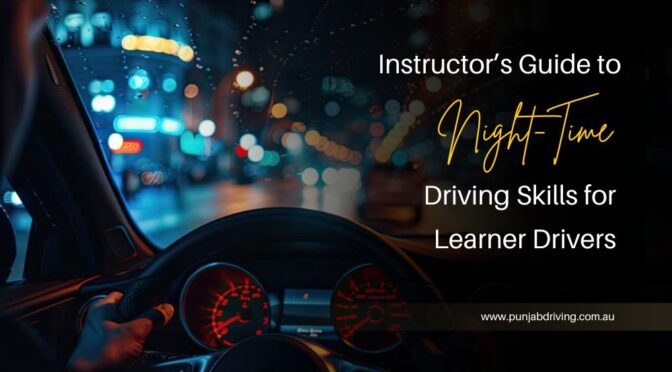Night-time driving isn’t like your morning drives. You face multiple challenges, like reduced visibility, increased fatigue, and altered perception. As a learner driver, you must be equipped with the knowledge to handle varying road conditions.
Local driving instructors in Point Cook are responsible for delivering comprehensive lessons that include tips for night-time driving. In this blog, we will provide you with practical tips and exercises to help your students become confident and competent night-time drivers.
Essential Tips for Night-time Driving
To enhance the effectiveness of driving at night, here are some expert tips to consider –
Familiarise Yourself with Vehicle Control: Make sure that the headlights, high beams, fog lights, and other lighting controls on the car are suitable for you.
Mirror Adjustment: Adjust the mirrors correctly to reduce blind spots and increase visibility. This is especially important at night when you can see the vehicles behind you.
Verify Tyre Pressure: Low tyre pressure can cause traction loss and raise the possibility of hydroplaning. Make sure the tyres are inflated to the proper level.
Clean the Windscreen: Good vision requires a clean windscreen. Clear the area of any dirt, debris, or smudges that can hinder the driver’s vision.
Avoid Glare: Use low beams whenever possible to avoid blinding oncoming traffic. Use high beams only when there are no oncoming vehicles and you need to see farther ahead.
Best Exercises for Night-Time Driving
Your local driving school in Melbourne will teach you the basics of night-time driving. This typically involves putting a few exercises into practice. These are –
- Slow Driving: To assist students adjust to the decreased visibility, practise driving slowly in a well-lit area.
- Emergency Braking: To help pupils improve their rapid reflexes, have them practise emergency braking in a controlled setting.
- Lane Changes: Practice lane changes at night to help pupils become used to merging and changing lanes in low light.
- Parking: Get comfortable parallel parking and backing into spaces, among other parking scenarios.
- Highway Driving: Give pupils experience driving at night on the highway to help them get used to travelling greater distances and faster speeds.
Adhering to these tips and encouraging regular practice can help you gain the knowledge and self-assurance necessary to drive safely at night. Never forget to stress how crucial it is to drive cautiously and patiently in poor light.
Become a Better Driver with Us
Learning in a local driving school in Melbourne is the best way to hone your driving skills or learn to drive efficiently. Here at Punjab Driving School Melbourne, we have been delivering quality and comprehensive driving lessons to help you become a pro driver. Get in touch with us by dialling 0430019433 today!




